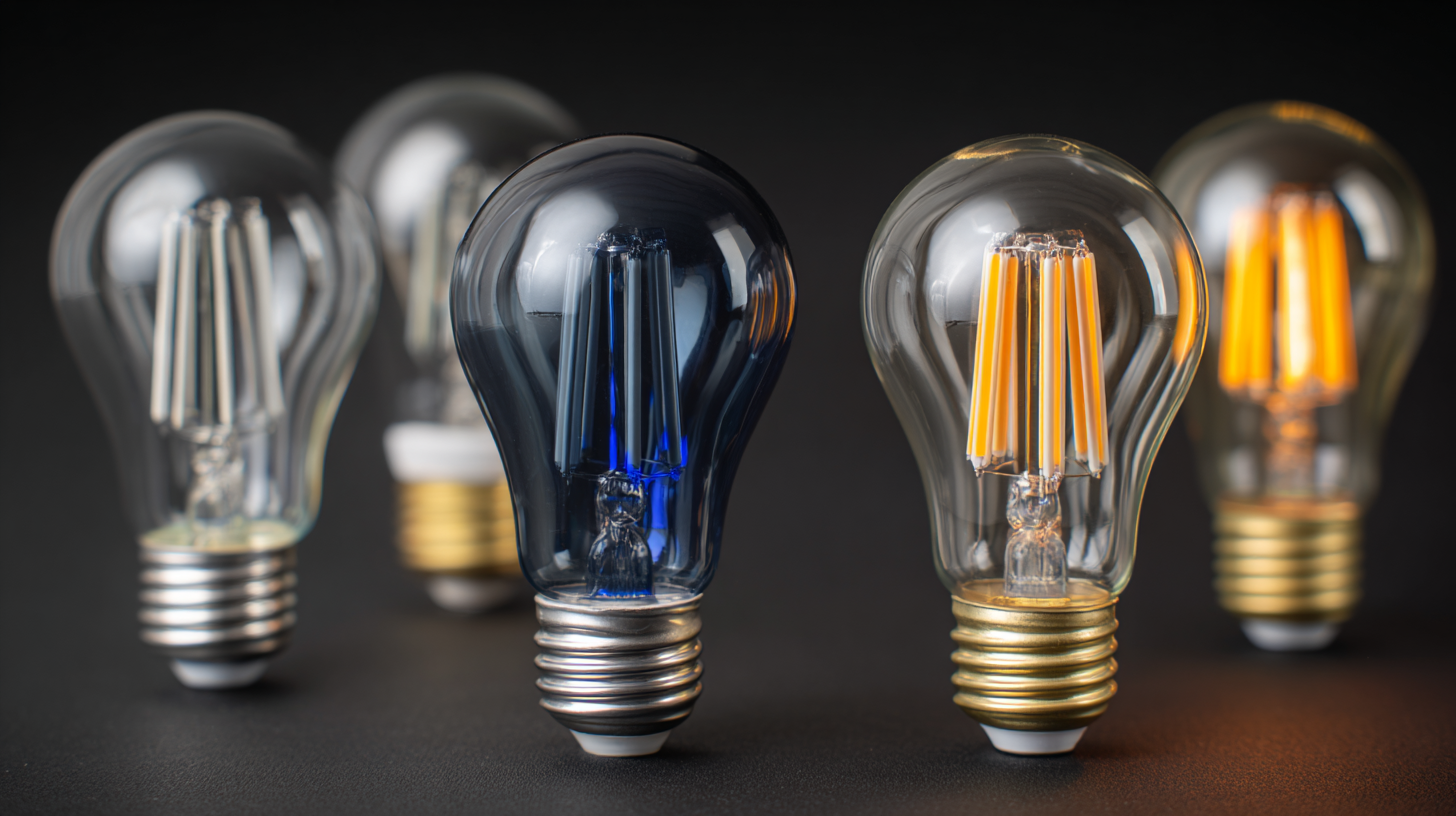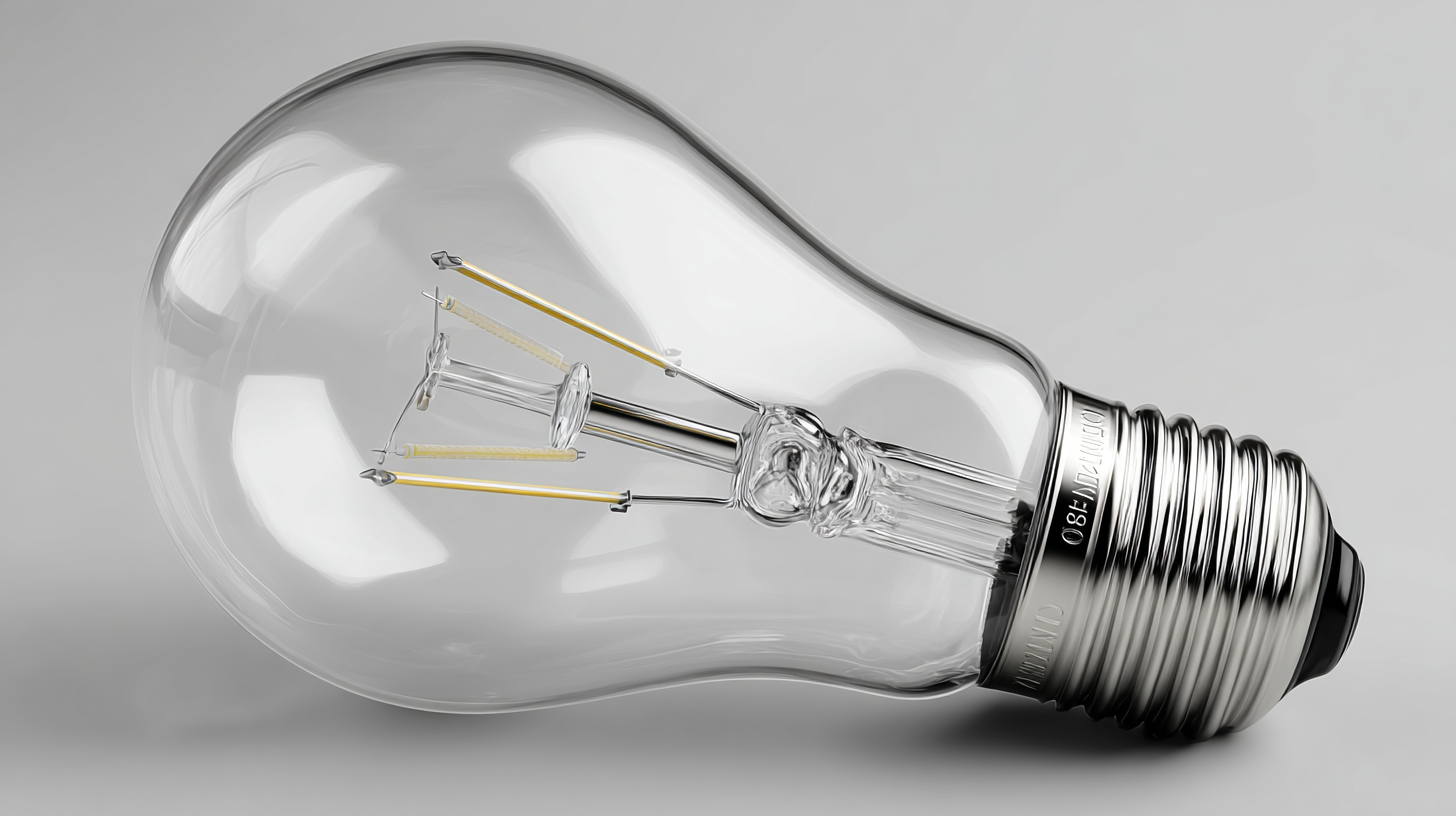Navigating Export and Import Certifications for the Best Small LED Bulbs in a Competitive Market
In today's rapidly evolving lighting industry, the competition for high-quality Small LED Bulb products has intensified, making effective export and import certifications more critical than ever. According to a recent market research report by Allied Market Research, the global LED bulb market is projected to reach $105.74 billion by 2027, growing at a compound annual growth rate (CAGR) of 15.6%. This surge in demand underscores the importance of compliance with international standards and certifications, which not only ensure product quality but also facilitate smoother entry into global markets. Navigating the complex landscape of these certifications can be a daunting task for manufacturers and exporters striving to differentiate their Small LED Bulb offerings. As we delve deeper into this subject, we will explore the key certifications necessary for success in this competitive arena and provide insights on how to leverage them for market advantage.

Understanding the Importance of Export and Import Certifications for LED Bulbs
When venturing into the competitive market of LED bulbs, understanding export and import certifications is crucial. These certifications not only ensure compliance with international standards but also enhance the credibility of your products. In many regions, regulatory bodies impose strict guidelines on electrical products, including safety and energy efficiency requirements. By obtaining the necessary certifications, manufacturers can demonstrate their commitment to quality and consumer safety, which is increasingly important to buyers today.
Furthermore, having the right certifications can significantly influence market accessibility. Many countries require proof of compliance before allowing imported goods, and failing to meet these standards can result in costly delays or rejections. Additionally, robust certification can differentiate your products from competitors, positioning them as trusted choices for consumers. In an industry where transparency and accountability are key, prioritizing export and import certifications provides a strategic advantage, ensuring that your small LED bulbs stand out in a crowded marketplace.
Key Certifications Required for Eco-Friendly and Energy-Efficient LED Products
When venturing into the competitive market of small LED bulbs, understanding the necessary eco-friendly and energy-efficient certifications is crucial. These certifications not only ensure compliance with regulatory requirements but also enhance product credibility among environmentally-conscious consumers. Key certifications such as Energy Star, which indicates superior energy efficiency, and the International Electrotechnical Commission (IEC) standards for safety and performance, are essential for any manufacturer aiming to succeed.
In addition to Energy Star and IEC, the Underwriters Laboratories (UL) certification plays a significant role in establishing product safety. UL certification assures consumers that the LED bulbs meet stringent safety tests, thereby reducing the risk of fire hazards or electrical failures. Furthermore, eco-labels such as the Labeling Program for Environmental Sustainability (LEED) can serve as a competitive edge, appealing to customers focused on sustainability. Consequently, navigating these certifications not only reflects a commitment to quality and safety but also aligns with the growing demand for greener technology in the lighting industry.
Navigating Export and Import Certifications for the Best Small LED Bulbs in a Competitive Market - Key Certifications Required for Eco-Friendly and Energy-Efficient LED Products
| Certification | Description | Importance | Region |
|---|---|---|---|
| ENERGY STAR | Certification for energy efficiency in lighting products. | Indicates compliance with energy-saving standards. | North America |
| RoHS | Regulation restricting hazardous substances in electrical products. | Ensures product safety and environmental protection. | European Union |
| CE Marking | Demonstrates conformity with health, safety, and environmental protection standards. | Necessary for market access in the EU. | European Union |
| UL Certification | Safety certification indicating compliance with North American safety standards. | Enhances product credibility and safety assurance. | North America |
| FCC Compliance | Certification for devices that emit radio frequency energy. | Ensures minimal interference with other electronic devices. | North America |
| ISO 9001 | International standard for quality management systems. | Indicates commitment to quality and continuous improvement. | Global |
Navigating Regulatory Requirements in the Global Market for LED Lighting
Navigating the intricate landscape of regulatory requirements is crucial for manufacturers and distributors of LED lighting products aiming to succeed in the global market. Compliance with international standards such as the International Electrotechnical Commission (IEC) or local certifications like ENERGY STAR can significantly enhance marketability. According to a recent report by Research and Markets, the global LED lighting market is projected to reach $140 billion by 2027, indicating immense opportunities for businesses that maneuver through these regulations effectively.
Tip: Always stay updated on the latest regulatory changes by subscribing to industry newsletters and following regulatory bodies on social media. This can save your business from costly fines and market entry delays.
Additionally, obtaining certifications can provide a competitive edge. For instance, a study by MarketsandMarkets highlighted that products certified under established standards are likelier to gain consumer trust. Therefore, investing in compliance not only fulfills legal obligations but also acts as a marketing tool.
Tip: Consider working with regulatory consultants to simplify the certification process. Their expertise can accelerate your entry into new markets and help you navigate complex documentation requirements.
Navigating Export and Import Certifications for the Best Small LED Bulbs
This chart illustrates the number of LED bulb models that comply with various export and import certifications. Understanding these certifications is critical in navigating the competitive landscape of the global LED lighting market.
Comparative Analysis of Alternative LED Bulb Suppliers and their Certification Processes
In the rapidly evolving LED market, selecting the right supplier requires more than just a favorable price; understanding their certification processes is equally crucial. A recent report from Grand View Research indicates that the global LED lighting market is expected to reach $105.74 billion by 2027, growing at a CAGR of 13.4%. This growth underscores the importance of compliance with industry standards to ensure product safety and efficiency. Different suppliers may adopt varied certification routes, which can affect the quality and reliability of their products.

For instance, suppliers in Europe often adhere to CE regulations, ensuring their bulbs meet essential health and safety requirements. Conversely, suppliers in the United States frequently pursue UL certification, which is recognized as a mark of quality and safety. A comparative analysis reveals that while some manufacturers may expedite the certification process to achieve quicker market entry, this can compromise product testing rigor. According to a Nielsen report, 72% of consumers are willing to pay more for products from companies that prioritize transparency and sustainability—factors closely tied to robust certification processes. Thus, conducting a thorough supplier comparison based on certification credentials can help buyers make informed choices in this competitive environment.
Strategies for Small Businesses to Overcome Certification Challenges in LED Exports
Navigating the complex landscape of export and import certifications is essential for small businesses looking to thrive in the competitive LED bulb market. With the global LED lighting market projected to reach $105.57 billion by 2025, according to a report by Grand View Research, staying informed about certification requirements can provide small companies a crucial edge. However, many small businesses face substantial hurdles in meeting international compliance standards, which can hinder their ability to compete effectively.

Tip: Familiarize yourself with specific certifications like the Energy Star or UL standards, as these are sometimes prerequisites for entering various markets. Building relationships with regulatory agencies can also help clarify the requirements and streamline the certification process.
To overcome these certification challenges, small businesses should consider leveraging partnerships with established exporters who understand local regulations. Research indicates that firms collaborating with industry experts can reduce certification processing times by up to 30%. Additionally, investing in certification training for team members can enhance internal capabilities and ensure compliance with the latest guidelines.
Tip: Utilize online resources and industry webinars to stay updated on evolving certification requirements and share insights with your team. This proactive approach not only enhances compliance but also strengthens your competitiveness in the export market.
